December in St Lucia is full for a reason. Families travel from all over South Africa, cars line the streets, and every beach day feels like a shared event. It's festive, busy, and for many people, exactly what they want. But once the Christmas rush fades, something else happens. January arrives quietly – and St Lucia changes pace. The same warm ocean. The same green summer landscape. The same wildlife moving through...
Explore the Magnificent Hippos of St. Lucia: A Comprehensive Guide, from Ingwenya Lodge

Located in the heart of KwaZulu Natal, South Africa, the town of St. Lucia serves as a portal to a wildlife spectacle, including the chance to encounter the majestic hippos of St. Lucia. These awe-inspiring creatures, known for their grandeur and captivating allure, freely roam the wetlands of the iSimangaliso Wetland Park, a revered UNESCO World Heritage Site. Ingwenya Lodge, a top-tier lodging option in St. Lucia, presents unique opportunities to observe and gain insights into these animals. Often at night, you will find a hippo or two drinking water from Ingwenya Lodge's swimming pool or grazing somewhere in town, adding to the remarkable wildlife experience.
The Enchanting Wetland Environment
St. Lucia's ecosystem is a blend of estuaries, marshes, and coastal sand dunes forming a haven for wildlife species. The rich vegetation and abundant water sources within these wetlands create a living space for hippos. Spanning more than 3,280 kilometres, the iSimangaliso Wetland Park hosts an impressive variety of flora and fauna, making it a paradise for nature lovers.
Diverse Wildlife Beyond Hippos
While hippos take stage, St. Lucia wetlands also house an assortment of other wildlife species. Visitors can catch glimpses of Nile crocodiles basking in the sun, bird varieties filling the air with melodies, and elusive leopards adding to the thrill of exploration. This rich biodiversity ensures that every visit promises encounters and deepens ones admiration for nature's marvels.
Anatomy and Physical Traits
Hippos rank among the mammals, with males weighing up to 3,500 kilogrammes. Despite their size, hippos display agility in water. Their eyes, ears, and nostrils are positioned high on their heads, enabling them to observe, listen, and breathe while mostly submerged.
Social Organisation and Behaviour
Hippos form pods or groups and frequently have a dominant male as the leader. The social structure within a pod is complex, featuring a hierarchy that influences interactions and mating behaviours. Communication among hippos involves a variety of vocalisations ranging from grunts to bellows.
Ancient Giants in the Modern Era
The presence of hippos in St. Lucia spans back thousands of years. Fossil evidence suggests that their predecessors inhabited these marshlands before settlement. Despite encountering challenges over time, hippos have demonstrated resilience by adapting to changing landscapes.
Efforts in Wildlife Conservation
Conservation initiatives in St. Lucia play a role in safeguarding hippos and preserving their habitat. Organisations like the iSimangaliso Wetland Park Authority and various non governmental organisations dedicate efforts to shield these animals from threats such as poaching and habitat degradation. Ingwenya Lodge actively participates in conservation endeavours by supporting projects aimed at sustainability and promoting tourism practices.
Wetland Sanctuaries
Hippos are mainly found in rivers, lakes, and marshes where they can dip underwater during the daytime to keep cool and avoid getting sunburned. By nightfall, they venture onto land to munch on grasses, devouring as much as 40 kilogrammes of vegetation in one feeding session. The wetlands of St. Lucia provide a mix of water based and land based habitats.
Seasonal Migration and Behaviour
The movements and actions of hippos are influenced by the changing seasons. In the season, they have water and food sources, allowing them to spread out more widely. However, during the season, they gather in water bodies where competition for resources can become intense.
Daily Schedules and Eating Patterns
A day for a hippo involves a combination of activities both in water and on land. They spend their days submerged in water to stay cool and avoid the blazing sun. When evening comes, they come out to graze on grasses, sometimes travelling distances to find feeding grounds.
Breeding practises and longevity
Hippos reproduce at a pace with females giving birth to one calf every two years after an eight month pregnancy period. Calves are born underwater. Quickly develop swimming skills while sticking close to their mothers for protection. In their habitat, hippos can live up to 40 years.
Living Alongside Crocodiles
An intriguing aspect of hippo behaviour is how they interact with Nile crocodiles in their shared environment. Despite being depicted as competitors, these two species typically coexist harmoniously. Crocodiles actually benefit from the presence of hippos, as the hippos grazing habits create waterways that make hunting easier for the crocodiles.
Avian Visitors and Other Mammals
Hippos also play a role in their ecosystem by providing habitats for creatures. Birds frequently rest on their backs, feasting on parasites that live on the hippos skin. This beneficial relationship is advantageous for both the hippos and the birds.
Challenges to Their Survival
Despite their size and power, hippos encounter threats to their existence. The destruction of their habitats due to expansion, pollution, and climate change poses dangers. Additionally, poaching for their ivory tusks. Meat contributes to dwindling hippo populations.
Local and global conservation efforts
Conservation efforts involve a combination of international actions. In places like St. Lucia, protected zones and wildlife corridors are established to protect habitats. On a global scale, organisations collaborate to increase awareness, support research endeavours, and enforce measures against poaching.
Commitment to Conservation
Ingwenya Lodge is deeply committed to preserving hippos and safeguarding their surroundings. The lodge actively supports a variety of projects, such as restoring habitats, conducting poaching patrols, and running educational programmes within the community. When guests stay at Ingwenya Lodge, they directly support these initiatives.
Educational Initiatives
Education plays a role in conservation efforts. Ingwenya Lodge supports programmes for visitors to gain insights into the lives of hippos. The challenges they encounter. Through guided tours, discussions, and interactive displays, guests can appreciate the significance of protecting these animals and their surroundings.
Prime Wildlife Viewing Spots
For those observing hippos in their environment, St. Lucia boasts numerous exceptional viewing locations. The St. Lucia Estuary stands out for its population, providing opportunities for boat tours to witness these giants from a safe distance. Another great spot is Lake St. Lucia, where hippos are often spotted basking on the shores or swimming in the waters.
Safety Guidelines for Visitors
While encountering hippos is an adventure, safety should always come first. Hippos can be territorial. Pose dangers when provoked. Visitors are advised to maintain a distance at all times, refrain from making disturbances, and heed the advice of experienced guides. Respecting their habitat and avoiding disruptions are practices to observe during their breeding season.
What You Can Anticipate
At Ingwenya Lodge, the guided tours we recommend offer an informative experience. Visitors can look forward to informed guides who share insights about hippos, their habits, and the surrounding environment. The tours often feature boat excursions, allowing guests to get up views of hippos while ensuring their safety.
Key Attractions of the Tours
A standout feature of these tours is the chance to observe hippos in their habitat going about their activities. From witnessing them graze at twilight to observing their interactions with wildlife, each tour provides unforgettable moments. Moreover, guests can relish the scenery of St. Lucia's wetlands, adding to the adventure.
Essential Items to Bring
When getting ready for a trip to St. Lucia, it is essential to pack. Must haves include breathable clothing, a brimmed hat, sunscreen, insect repellent, and sturdy walking shoes. Binoculars and a camera are also recommended for capturing the breathtaking wildlife and landscapes.
Ideal Times for Visiting
Hippos can be seen all year round, and the wet season also offers its own charm with lush surroundings and abundant wildlife activity.
Weather Considerations
In St. Lucia, the weather leans towards subtropical, characterised by humid summers along with dry winters. It's advisable for visitors to be ready for weather patterns and pack accordingly. Opt for moisture wicking clothing during the summer season. Consider layering options for the cooler mornings and evenings of winter.
Responsible Travel Practices
The sustainability of St. Lucia's resources heavily relies on tourism practices. Visitors should follow guidelines aimed at reducing their impact by steering clear of single use plastics, supporting eco friendly accommodations, and getting involved in conservation initiatives. Through decision-making, tourists play a role in safeguarding St. Lucia's beauty for generations to come.
Supporting Local Communities
Engaging with communities and backing their enterprises can significantly contribute to conservation endeavours. Buying crafted goods, dining at neighbourhood eateries, and hiring guides not only bolster the economy but also nurture a sense of environmental stewardship within the community.
Reflecting on the Majestic Hippos of St. Lucia
Encountering the hippos of St. Lucia offers an experience rich in history and ecological significance. These remarkable creatures capture the imagination and hearts of all who have the privilege of crossing paths with them.
At Ingwenya Lodge, you have the chance to witness hippos in their environment, supporting their preservation efforts and developing a love for nature. Whether you're a wildlife lover, a photography enthusiast, or just someone eager to explore St. Lucia's hippos, offer a journey brimming with excitement and exploration.
Further Reading
Evenings in St Lucia have a certain rhythm. The air is warm, the sea hums just beyond the estuary, and somewhere along the coast, the first leatherback turtle hauls herself out of the surf. From the deck at Ingwenya Lodge, guests often watch the sky darken and know that, down the beach, one of the ocean’s oldest rituals is beginning.
Ingwenya Lodge is a family-run self-catering lodge on the outskirts of St Lucia, nestled against the iSimangaliso Wetland Park (South Africa's first UNESCO World Heritage Site). The lodge's six units each have fully equipped kitchens and modern comforts, and the property offers panoramic views of both the St Lucia estuary and the Indian Ocean. The setting is tranquil – hippos often graze on the lawns at night – giving guests a genuine...
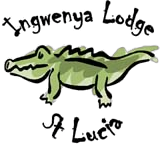


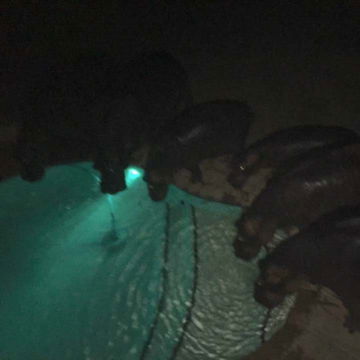


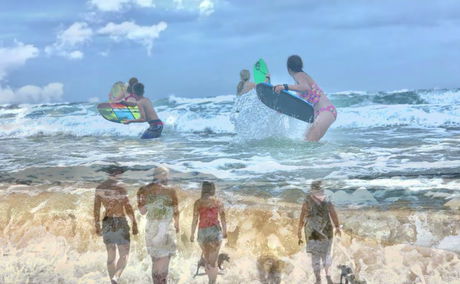

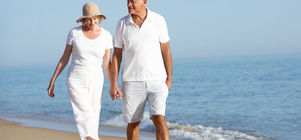
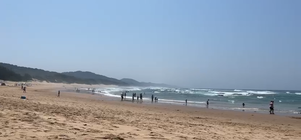
Share This Post